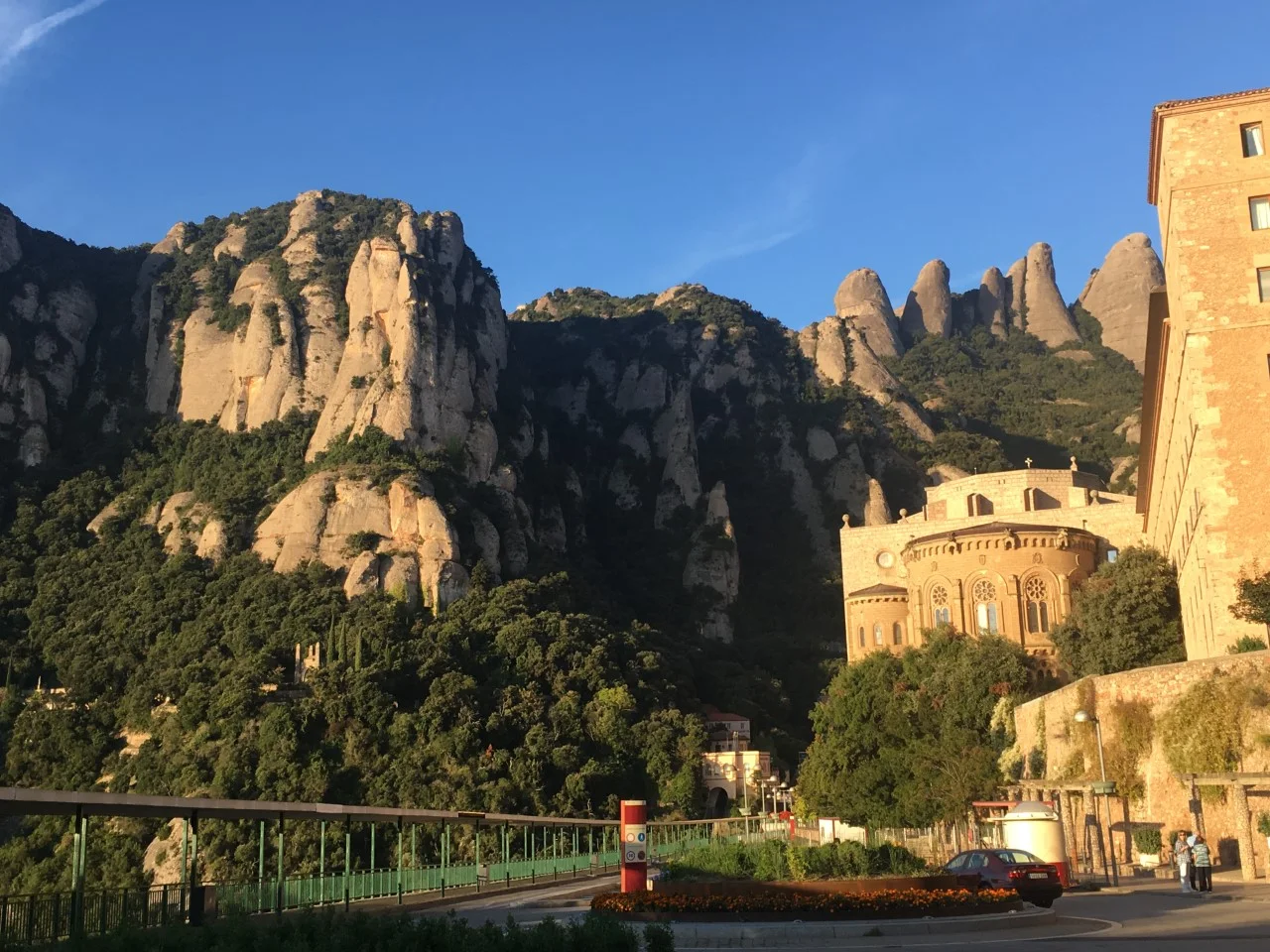When referring to Montserrat, people do not always consider that it is more than a Monastery, Montserrat is a whole mountain (Spain). During your visit to Montserrat it will be possible to admire more than just the Monastery: you can take a walk or take one of the funiculars and get closer to the nature and geology of the mountain. If you are interested in outdoor activities or wildlife, you will be amazed by the unique setting of the Montserrat mountain.
 |
| Montserrat Mountain Spain |
This page will provide you with everything you need to know about Montserrat Mountain in Spain. There is information on the characteristics of the mountain, the geology of the mountain, the climate on the mountain, how the mountain has been approached by man throughout history, and specific details on the highest peak of the mountain, San Jerónimo.
The characteristics of the Montserrat Mountain
The Montserrat mountain is 10 kilometers long and 5 kilometers wide. It has a perimeter of almost 25 kilometers. The area is almost 45 km 2. The mountain gives the appearance of being taller than it really is, because it rises directly from the Llobregat river. There are no other mountains in its vicinity that come close to its height, so it looks very distinctive in this part of Catalonia, Spain.
Montserrat Mountain Geology
The word Montserrat actually means "jagged mountain", and when you see the mountain in person you will know exactly what this means. It has the appearance of being serrated and forms distinct peaks.
The geological origins of the mountain are sedimentary. What today is the base of the mountain was, at the end of the Mesozoic era, the delta of a river that came from the Balearic continent. It flowed into a large lake in central Catalonia. Sediments can be found at the bottom of the lake. When the Balearic continent submerged, what was left was a dry lake and an uncovered delta, a mass of conglomerates.
 |
| Montserrat Mountain Spain |
The mass was vulnerable to the elements. So over the next ten million years movements in the earth's crust, changes in climate, and erosion formed the mass in the form we see today.
The rocks of Montserrat consist of a conglomeration of hardened and eroded rocks and limestone. This makes them resistant compared to other mountains in Catalonia (Spain) and able to resist erosion.
Weather
Montserrat's climate is unique: it is humid and Mediterranean (subtropical, warm in summer and temperate in winter). The very sharp points on the mountain indicate that there can be large contrasts in climates at small distances. These are known as microclimates.
 |
| Montserrat Mountain Spain |
In the Monastery of Montserrat there is a meteorological station located at an altitude of 740m. The weather station has found that there is an average annual rainfall of 678 l / m 2. The annual average temperature is between 14 and 16 degrees Celsius. In addition, the sea winds cause that there can often be a thick fog over the mountain. This thick mist provides useful moisture for plant growth (for more information on plant life on the Montserrat mountain, see our Guide to the Montserrat Natural Park ).
Snow on Montserrat is unusual, but from time to time there will be a considerable amount of snow.
The Relationship Between Montserrat Mountain and Man
One of Montserrat's peaks, the Montgrós peak, was first scaled in 1880. After this initial ascent, more trails were created on the mountain.
Climbing has also gained importance in the mountains over the years (for more details on the possibilities of mountain climbing, see our Guide to Climbing Montserrat Mountain ). In 1922 the Pico de los Ecos was climbed. Subsequently, other peaks were climbed, such as the Cavall Bernat Peak in 1935, the San Jerónimo Wall in 1948 and the Devil's Wall in 1955.
 |
| Montserrat Mountain Spain |
Man has also established a relationship with the mountain by living in its caves. During prehistory, several of the mountain caves were inhabited. The two caves that have proven to be of most interest are Cova Gran and Cova Freda, both on the southeast side of the mountain. Information on the exploration of the caves was published in 1925 and it was discovered that they had been the sites of Neolithic pottery.
San Jerónimo - The highest peak of the Montserrat mountain
San Jerónimo is the name of the highest peak of the Montserrat mountain. As you exit the San Juan Funicular you can take a look at the rock formations around the peak. Each different rock is given a name that is related to its distinctive shape. The names for the rocks include: The Little Mummy, the Mummy, the Cat, and the Elephant.
Around San Jerónimo there are hermitages, small chapels that were once inhabited by monks. For more information about the walks you can take through San Jerónimo and the hermitages that you can see along these walks, see our Montserrat Hiking Guide.
Montserrat Mountain is a beauty: its unique rock formations arouse the interest of geologists from all over the world. While in Montserrat, take a look at the natural surroundings: whether you are a nature enthusiast or not, you will surely get something from the experience.
